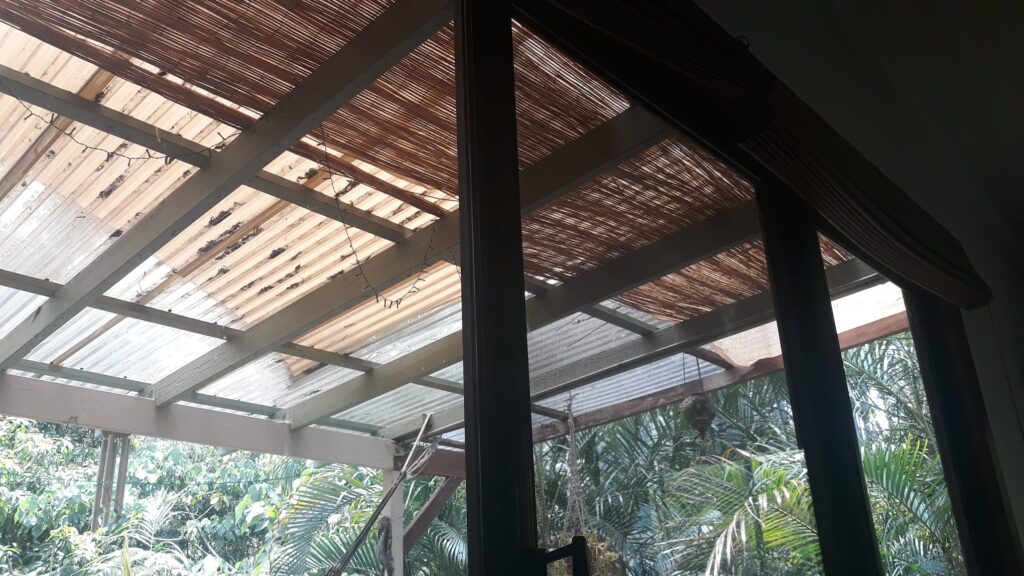Like a lot of people in the Northern Rivers we live in a house built with little regard for modern ‘passive solar design’. It is very hot in summer and very cold in winter.
This is all very pertinent to reducing our carbon emissions because when we live in houses that don’t keep us cool in summer / warm in winter, we will be inclined to use more energy to battle those temperatures, by way of devices like air conditioning, fans, etc. So, in short, if we can improve the ‘thermal barrier’ of our homes we reduce the need for using energy for heating/cooling.
HOW CAN YOU IMPROVE YOUR HOME?
Every home has different challenges, and there’s likely to be a range of retrofit solutions to improve its thermal performance. I’m going to share here photos of the fixes we’ve done in our place to keep it cooler in summer, and hopefully that’ll give people some ideas for their own place. (I’ll write comments under each photo to explain them).
The emphasis here is on reducing the amount of heat that enters our homes via sunlight, without shutting them off completely to natural light.
BLINDS/CURTAINS
Starting with the basics – blinds/curtains – to reduce summer sun getting in and heating a room. Some form of external blind/ awning would be a better option because it stops the sun getting through the window in the first place. (but difficult to install in this 2nd floor location). Reflective blinds or thick curtains are better than these, but it’s a compromise with light and visibility. The palms outside also help shade this window, though deciduous trees would be ideal so sun can get in during winter.

Here we have roman blinds on the outside of doors leading onto the deck. They stop sun/heat getting through the glass, but are protected by the deck roof (otherwise you would need weatherproof awnings, shutters or blinds)

DECKS
Our deck has a clear lazerlight roof that becomes a heat trap in summer and pours hot air into the living rooms. Fortunately I’ve been able to add a shade sail above it (that comes down in winter, see below), and some shade cloth and reed screening under the battens.

Here’s the shade sail above the deck roof, to stop sun hitting it in the first place, without blocking out all the light. I was lucky here that there were places above the deck roof to attach it to.

This window gets western sun in the afternoon, so I’ve put a blind outside to stop it getting in. A solid awning would be better.

Shade sails over the driveway, to reduce western sun heating up the concrete in the afternoon.

Seb.